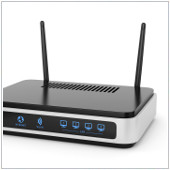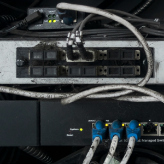 Remember in movies, how the villain’s lair is home to an abundance of newfangled tech, gadgets and monitors that stretch as far as the eye could see? Some may attribute it to superb set design but the message behind this was that the road to success (or blowing up your enemies) calls for not one but two monitors. If total world domination doesn’t sound enticing to you, here are six more reasons why you should work with dual monitors:
Remember in movies, how the villain’s lair is home to an abundance of newfangled tech, gadgets and monitors that stretch as far as the eye could see? Some may attribute it to superb set design but the message behind this was that the road to success (or blowing up your enemies) calls for not one but two monitors. If total world domination doesn’t sound enticing to you, here are six more reasons why you should work with dual monitors:
Enhanced productivity
Published studies conclude that by working with dual monitors, overall productivity increases by 20-50%. Computer programmers, for example, can use one screen for source coding and the other for programming; by using dual monitors, they no longer need to toggle back and forth between tabs. This reduces error and frees up time to complete more projects.
Better multitasking
Efficient multitasking requires adequate screen space to keep multiple applications simultaneously visible — a view that single monitors alone simply cannot accommodate. Workers who require computers, like customer service reps and web designers, would no longer waste time switching between tabs and resizing windows to fit the limited space; they could now focus on completing their tasks accurately and efficiently. .
Easier cutting and pasting
This reason resonates with jobs that call for creating newsletters or PowerPoint presentations. Dual monitors would eliminate the need for alternating between tabs and scrolling up and down as you work. Also, the enhanced visibility reduces chances of making mistakes and thus losing more time fixing them.
Image and video editing
With dual monitors, the days of stacking numerous editing tools on top of the image or video you’re working on are long gone. Instead of your screen looking like a game of Mahjong, you can put the editing tools on one screen and leave the image on the other. With better visibility, you’re less likely to commit errors and more likely to be finessed, and you’re not sacrificing valuable working time in the process.
Product comparison
You want to buy a camera, and you have two models in mind. It’s time to make a decision, so you have to compare their specs. If you had only one monitor, you’d need to go back and forth from one tab to another. But if you had two monitors, you could view the models side-by-side to help you clearly see their differences and make an informed purchase.
New gaming experience
Working hard means you get to play hard — what’s better than a gaming session? The answer is a relaxing gaming session on dual monitors! With more screen space, you can see enemies from afar, anticipate their actions, plan your retaliation, and attack!
Dual monitors benefits almost every industry because of the enhanced visibility, larger screen space, and how you can briefly nap behind them without getting caught Using dual monitors can enhance even your leisure time activities as well.
Broaden your horizons by getting in touch with us. We’ll answer any questions you have.

 It’s astounding how celebrities manage to amass millions of followers and gain thousands of likes for posting a photo of their shadow. Companies of all sizes would go crazy for that kind of exposure, but rarely do their wishes get granted. But not all hope is lost, start small and take baby steps with the help of Instagram’s recently-announced tools that help make the process of establishing your company’s presence an easier one:
It’s astounding how celebrities manage to amass millions of followers and gain thousands of likes for posting a photo of their shadow. Companies of all sizes would go crazy for that kind of exposure, but rarely do their wishes get granted. But not all hope is lost, start small and take baby steps with the help of Instagram’s recently-announced tools that help make the process of establishing your company’s presence an easier one: Much like unpredictable thunderstorms, internet problems relentlessly plague those wishing to get some work done or catch up on the latest movies. Instead of waiting for divine intervention, take it upon yourself to get rid of sluggish connections. Not only do these ten tips reduce frustration but they also help you speed up your Wi-Fi:
Much like unpredictable thunderstorms, internet problems relentlessly plague those wishing to get some work done or catch up on the latest movies. Instead of waiting for divine intervention, take it upon yourself to get rid of sluggish connections. Not only do these ten tips reduce frustration but they also help you speed up your Wi-Fi: Gamers require an effective strategy to thwart the boss, athletes require constant updates on the latest tournaments to improve performance and businesses require an online community to fully thrive. As the saying goes: ‘What comes easy won’t last, and what lasts won’t come easy’. This is especially true when you embark on building an online community for your company. Allow the following five tips to help you make the process an easier and enjoyable one:
Gamers require an effective strategy to thwart the boss, athletes require constant updates on the latest tournaments to improve performance and businesses require an online community to fully thrive. As the saying goes: ‘What comes easy won’t last, and what lasts won’t come easy’. This is especially true when you embark on building an online community for your company. Allow the following five tips to help you make the process an easier and enjoyable one: Most people are still impressed when they see a LinkedIn profile with 500+ connections. It gives that person authority in their industry and shows they’re a valuable member of the business world. In other words, 500+ connections can help sell you and your business. So how can you reach this coveted number? Here are some tips to get started.
Most people are still impressed when they see a LinkedIn profile with 500+ connections. It gives that person authority in their industry and shows they’re a valuable member of the business world. In other words, 500+ connections can help sell you and your business. So how can you reach this coveted number? Here are some tips to get started.

 Implementing Business Intelligence (BI) software and other tools can help your company grown by leaps and bounds. However, it has to be planned for with the proper level of diligence and care to truly be beneficial to your business. Haphazardly installing BI software can result in an expensive misstep that sees you fall behind the competition. But with well executed BI planning and implementation, your company can grow in ways never imagined.
Implementing Business Intelligence (BI) software and other tools can help your company grown by leaps and bounds. However, it has to be planned for with the proper level of diligence and care to truly be beneficial to your business. Haphazardly installing BI software can result in an expensive misstep that sees you fall behind the competition. But with well executed BI planning and implementation, your company can grow in ways never imagined.